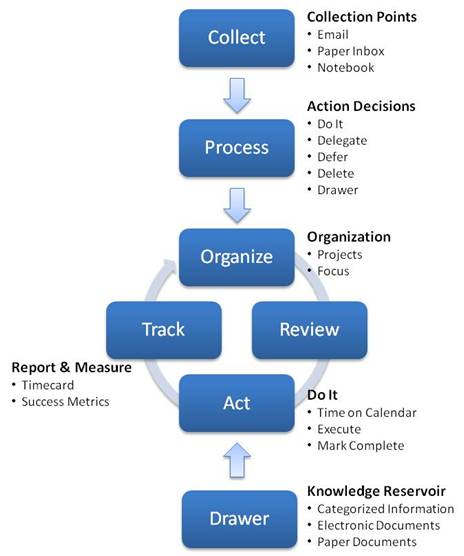High Performing Teams Require High Performing People
Article Summary
- Any successful team effort requires the individuals to be highly motivated and self managing.
- People can develop their motivation and self-management skills if they focus on their foundation, work organization, and action execution.
- The Be More Effective workshop can be deployed to help people develop those skills.
High Performing Teams Require High Performing People
I was at a seminar the other day where we were talking about the SCRUM method, not the rugby term, but the method of software development. It struck me, for that method to work, you need to have highly motivated, self managing people on the team. This is true for many quality methods that professionals have been espousing for decades. For example, take a Kaizen event (a Lean continuous improvement method). A key component to a successful Kaizen is that people make the time for, and actively contribute to the event. This is especially true if the Kaizen leader has been asked to perform the event on a strict timeline. If the event team doesn't have people capable of proactively identifying and executing the work without constant follow up from the event leader, the process goes slowly and often fails.
What does it mean to be highly motivated and self managing?
I think most folks would agree that when you're on a team with people that can help define the work as well as do the work, things just go better. But how many people operate that way? In my experience, many companies fall into the '2-3 people out of ten you work with' category. Twenty to thirty percent of the folks are highly motivated and self managing. How in the world do things get done? The answer is usually, very slowly. High performing team, probably not!
How do you find or develop people that are highly motivated and self managing?
I call 'highly motivated and self managing' people, personally excellent people. And I believe there are three main ingredients to personal excellence:
1) Foundation - An inside out approach that helps an individual form the most effective relationship with themselves and others.
For this area, my favorite way of thinking about this is embodied in the Seven Habits of Highly Effective People by Stephen Covey. The book describes the journey from dependence to independence to interdependence, i.e. how to understand and manage ourselves and find the most effective ways of interacting with the people around us.
2) Structure - a mapping of how work is organized (work = "doing stuff").
At any given moment there are expectations that people have for us. They come from one's profession, relationships, community, and ourselves. We must consider that all things we do require our attention and energy, and that we must organize ourselves so that we can most effectively meet the important expectations. I think of this in terms of an organizational pyramid containing these layers (tip to base), a) communities, b) roles, c) areas of focus, d) objectives, e) projects, f) tasks, and g) appointments.
- Communities - the social environments in which we exist, e.g. a company, a church, a marriage, etc.
- Roles - our specific function in context of a community, e.g. husband, father, individual contributer, manager, pastor, deacon, etc.
- Areas of Focus - our roles can be very complex and often it's important that we further break down the work into areas that help us think about what we need to do, e.g. a father role can include areas such as relationship building, education planning, planning fun, or a manager role could include areas such as strategy planning, employee development, operations management, etc. Areas of focus can be strategies (three to five year goals), processes (work flow), organization hierarchies, any logical break down of work that enables focus and action.
- Objectives - objectives are SMART, i.e. they are specific, measurable, achievable, relevant and timely. They are written in context of a specific area of focus, and are articulated in a way that everyone understands them and you know when you're done.
- Projects - I think of projects as ways of breaking down objectives into actionable chunks of work that have specific expected outcomes. The Project Management Institute [PMI] does a really nice job of educating people on excellent project management practices [1]. Projects can aid in focusing people on specific timeframes, organizations and/or deliverables. They can also facilitate the ability for time tracking, which can help businesses with models that depend largely on people's time, such as consulting, law, or accounting practices.
- Tasks - tasks are the day to day actions to accomplish something. David Allen's Getting Things Done: The Art of Stress-Free Productivity (GTD), and Sally McGhee's Take Back Your Life!: Using Microsoft Office Outlook 2007 to Get Organized and Stay Organized books are great references in defining tasks and next actions, and they provide proven practices that help manage tasks more effectively.
- Appointments - ultimately it takes time to do something, and managing your work via a calendar will help assure that you create the time block and recognize the amount of time it takes to execute an action. Over time, by tracking real effort, you will become much better at estimating how long something will take and it will give you confidence in the commitments that are and will be made.
The number of layers necessary are dependent on the complexity of what needs to be organized. Some work will need all layers, e.g. company work may need every level, and some work may only require a limited number of layers to help understand what needs to be accomplished, e.g. husband work may be in the form of a honey-do list.
3) Execution - A method of processing the day to day work.
Life happens, and all the planning and organizing in the world won't stop the world from spinning or stop people from expecting things. It's important to have a method for managing life as it comes at you. If you have a model, that's excellent, keep going. However, if you don't, here's one way to think about it: 
The POS Execution Model embodies the steps needed to capture incoming expectations (work), align it to our objectives and projects, execute and track action, and capture information. The model has seven steps, 1) collect, 2) process, 3) organize, 4) review, 5) act, 6) track, and 7) capture knowledge.
- Collect - the collection step gathers all of the work inputs. Having a limited set of collection points can greatly simplify how work comes at you.
- Process - often people do work as it comes at them, that doesn't work. This step is a way of processing the incoming work, so that it's prioritized, organized and ready to be executed at the right time. It has five potential outcomes for the work, 1) delete it, 2) file it, 3) do It, 4) delegate it, or 5) defer it.
- Organize - this step is dedicated to the care and feeding of your organization structure as described in the previous section. It includes activities such as analyzing your collection points, managing your list definitions (communities, roles, objectives, projects, tasks, appointments, contacts), and managing your reference / filing system.
- Review - because the paradigm has changed in managing the incoming work, i.e. we are not doing it as it comes in, we need to be vigilant in allocating time to plan our work. This step is focused on how to do that, i.e. how to plan weekly and daily. Weekly planning is focused on aligning tasks to your objectives and calendar, and daily planning is focused on assuring the tasks are aligned to what needs to be accomplished that day.
- Act - this is the 'do it' step. If time tracking is important, it would also include assuring your calendar includes the time spent on executing the work.
- Track - tracking is important because it gives you the knowledge needed in aligning your commitments to what actually happens. By tracking the work, you can take stock in what has been accomplished, if you're held accountable to a performance review this could be very useful. It also strengthens your ability to estimate and plan because you're building up data centric examples of previous work that can help you estimate and plan similar work in the future.
- Drawer - the drawer represents your knowledge management system. It could be a file cabinet, a computer drive, a knowledge management application, whatever is the most effective way in assuring that you can find and produce needed information in executing the work.
How can I learn more about this topic?
Throughout the article, there have been a number of books mentioned, I suggest reading one or more of the references. There is an available workshop that goes through the material in this article in more depth, and includes a number of exercises that help people better understand the way they think about their work, and can lead them to become more effective.
[1] - PMI is responsible for publishing the PMBOK (Project Management Body of Knowledge) Guide and Project Management Standards, which have become the project management defacto best practice standards.
- Chris's blog
- Login or register to post comments
-

 Printer-friendly version
Printer-friendly version Post to Twitter
Post to Twitter- Send by email
- PDF version
Recent Updates
Microsoft Outlook Add-In

Focus on Your Life, Not Your Inbox
Achieve greater focus by shifting your attention from e-mail to accomplishing what matters most!
Company News
Stay up to date with our newsletter!



